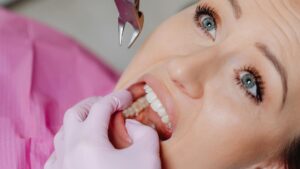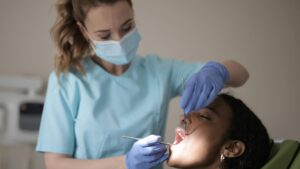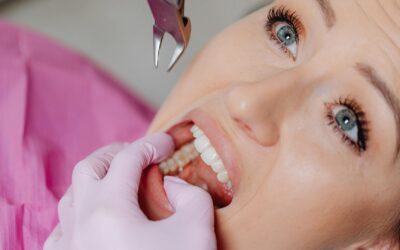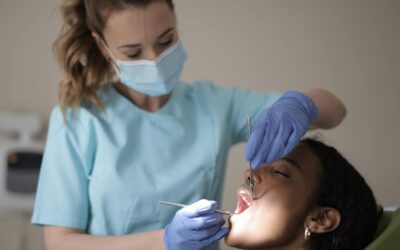Tooth extraction is a common dental procedure, but the healing process afterward plays a crucial role in ensuring optimal oral health. If you’ve just had a tooth pulled, you might be wondering: What can I do to help a normal socket heal properly? In this guide, we’ll explore practical and dentist-recommended recovery tips for a normal socket after tooth extraction—ensuring faster healing, minimal discomfort, and long-term oral wellness.
Whether you’re dealing with a simple tooth removal or prepping for a wisdom tooth recovery, the advice below will help your healing journey stay on track. We’ll also touch on oral hygiene, dietary considerations, and common do’s and don’ts after extraction.
🦷 What Is a Normal Socket After Tooth Extraction?

After a tooth is removed, the empty space in your gum and bone is referred to as a tooth socket. A normal healing socket typically forms a blood clot, which protects the underlying bone and nerves. This clot is essential for healing. If the clot is dislodged, it may lead to complications like dry socket, which is painful and requires clinical attention.
Note: Minor swelling, slight bleeding, and discomfort are normal for the first 24-48 hours post-extraction. Always follow your dentist’s specific instructions.
✅ Top Recovery Tips for a Healthy Tooth Socket
Following a few careful steps can significantly improve healing and prevent complications.
1. Protect the Blood Clot
- Avoid sucking on straws or smoking for at least 72 hours.
- Don’t rinse your mouth vigorously for the first 24 hours.
- Avoid spitting, which may disturb the clot.
Why it matters: Disrupting the clot may cause dry socket, a painful condition that delays healing.
2. Follow a Soft Food Diet
For the first 2–3 days, stick to foods that are soft and require minimal chewing:
- Mashed potatoes
- Yogurt
- Applesauce
- Broths or soups (lukewarm)
- Scrambled eggs
💡 Tip: Avoid hot, spicy, crunchy, or acidic foods during the initial healing phase.
3. Apply Cold Compresses
- Use an ice pack on the outside of your face near the extraction site.
- Apply for 15-20 minutes at a time during the first 24 hours.
- This helps reduce swelling and numbs the area.
4. Keep Your Head Elevated While Resting
Sleeping with your head slightly elevated on pillows helps reduce blood flow to the extraction site, minimizing bleeding and throbbing.
5. Maintain Oral Hygiene (Gently)
- Avoid brushing directly on the extraction site for the first day.
- After 24 hours, gently rinse your mouth with warm salt water 2–3 times a day.
- Resume gentle brushing and flossing away from the socket area.
📌 Keep in Mind: Do not use commercial mouthwashes unless approved by your dentist, as some can irritate the site.
🗓️ Tooth Extraction Healing Timeline: What to Expect
| Time Frame | Healing Milestone |
|---|---|
| 0–24 hours | Blood clot forms, initial swelling starts |
| 1–3 days | Swelling may peak, minor discomfort normal |
| 3–7 days | Clot stabilizes, socket starts closing |
| 1–2 weeks | Gum tissue regenerates |
| 1 month+ | Bone begins to rebuild in the socket |
🚫 What to Avoid During Socket Recovery
To ensure a normal healing process, steer clear of:
- Smoking or vaping
- Carbonated beverages
- Heavy physical activity for the first 48 hours
- Touching the socket with your tongue or fingers
These activities can either introduce bacteria or dislodge the protective clot.
🧠 When to See a Dentist
While mild discomfort is expected, contact your dentist if you notice:
- Severe pain after 2–3 days
- Bad taste or smell from the socket
- Excessive bleeding
- Swelling that worsens instead of improving
Must-Read: 10 Things to Avoid After Tooth Extraction for Fast Healing
FAQs
How long does it take for a normal socket to heal after tooth extraction?
A normal socket typically heals within 7 to 10 days after a simple tooth extraction. Complete gum healing may take up to 3–4 weeks, while the bone underneath can take several months to fully regenerate. Proper aftercare and avoiding dry socket can significantly speed up the process.
What should I avoid to prevent dry socket after a tooth extraction?
To avoid dry socket after tooth extraction, do not smoke, use straws, rinse forcefully, or eat hard/crunchy foods during the first 48–72 hours. These activities can dislodge the blood clot protecting the socket, leading to pain and delayed healing.
What can I eat after a tooth extraction for faster healing?
Stick to a soft food diet after tooth extraction to help with healing. Ideal options include yogurt, applesauce, mashed potatoes, scrambled eggs, and smoothies (without straws). Avoid spicy, hot, crunchy, or acidic foods that may irritate the extraction site.
Is it normal to feel pain 3 days after tooth extraction?
Yes, mild to moderate pain 2–3 days after tooth extraction is normal. The discomfort should gradually decrease. However, if the pain intensifies or is accompanied by a bad smell or taste, it may indicate dry socket or infection—consult your dentist.
How do I clean my mouth after a tooth extraction without disturbing the socket?
After 24 hours, rinse your mouth gently with warm salt water after a tooth extraction—especially after meals. Avoid commercial mouthwashes unless prescribed. Brush your teeth carefully, avoiding the extraction site, to maintain oral hygiene without disrupting the healing socket.
📚 Final Thoughts on Tooth Socket Recovery
A normal socket after tooth extraction should show steady improvement each day. Healing is typically smooth when you:
- Follow post-op care guidelines
- Eat wisely
- Keep the area clean
- Avoid risky habits like smoking
Taking these small steps leads to a faster recovery, protects you from painful complications, and sets the foundation for future dental work, such as implants or bridges.
Disclaimer: The content provided in this article is for educational and informational purposes only. It does not substitute professional medical advice, diagnosis, or treatment. For guidance specific to your dental condition or recovery, please consult your dentist, oral surgeon, or licensed healthcare provider.










0 Comments